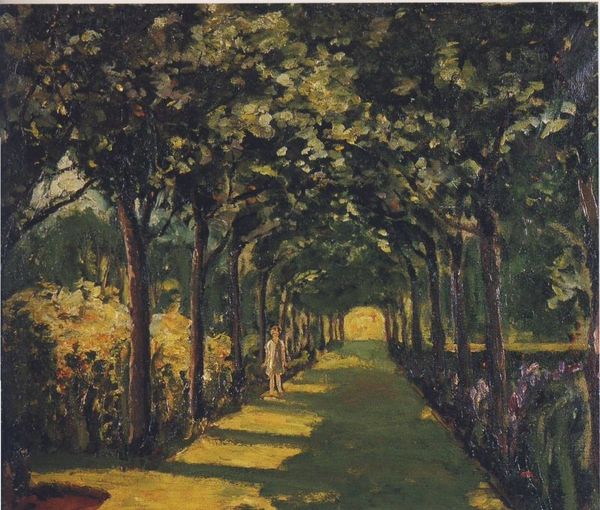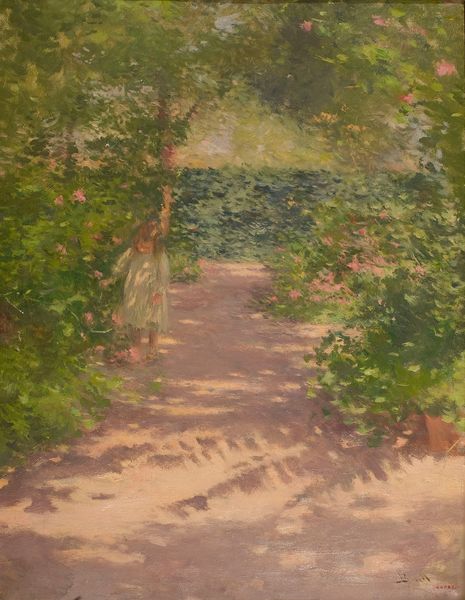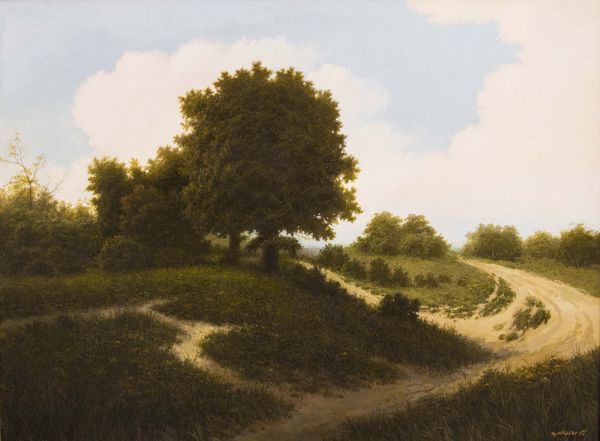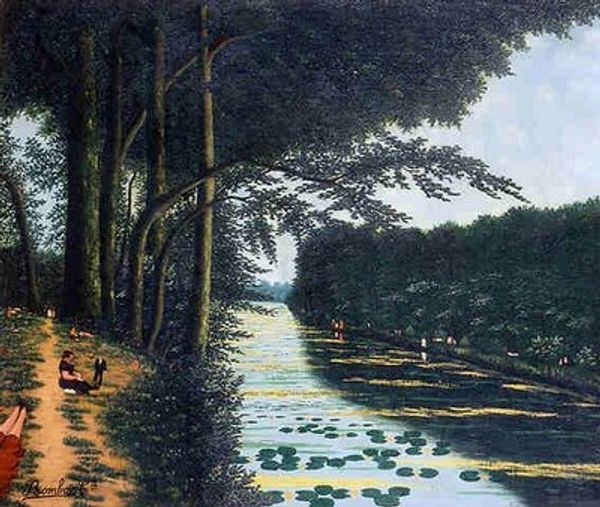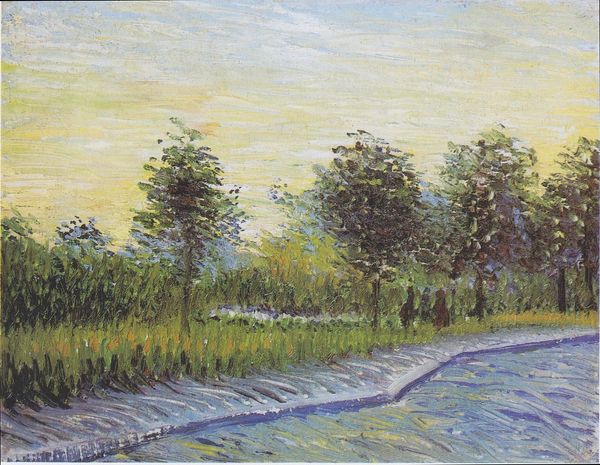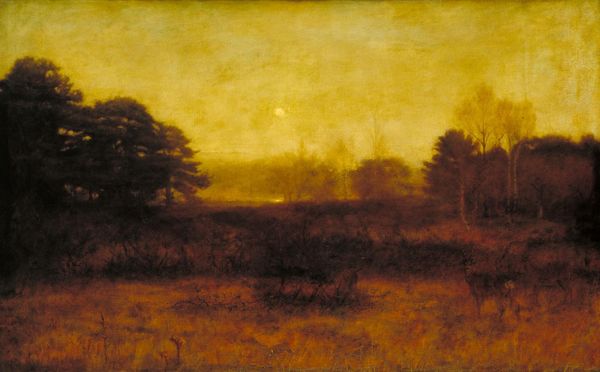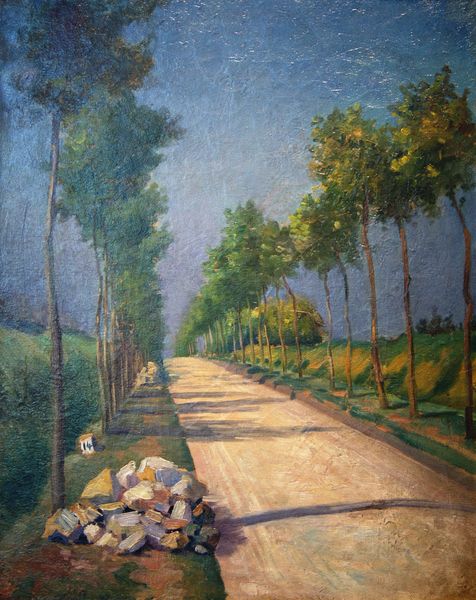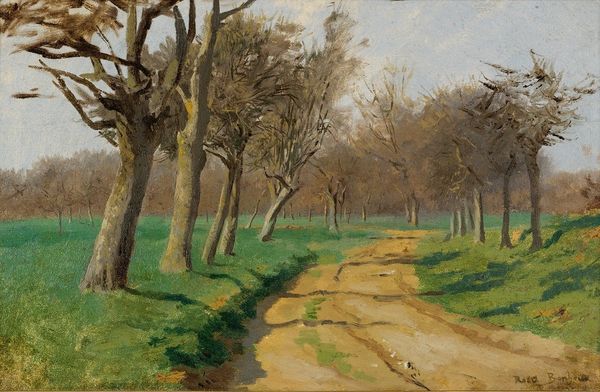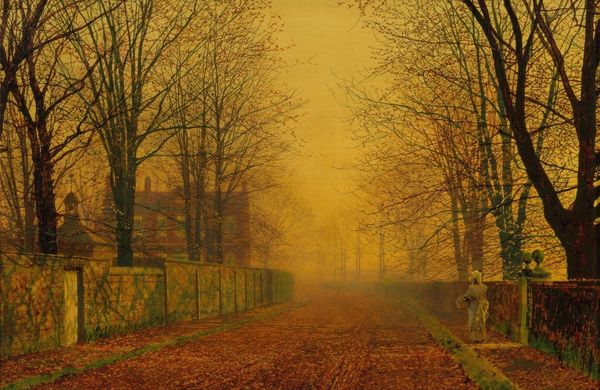
painting, oil-paint
#
tree
#
rural-area
#
painting
#
oil-paint
#
landscape
#
figuration
#
nature
#
oil painting
#
road
#
line
#
genre-painting
#
modernism
#
realism
Copyright: Camille Bombois,Fair Use
Editor: Here we have Camille Bombois’s "Yellow Street," painted in 1925 using oil paint. It depicts a road leading toward a yellow house with a child in the foreground, framed by nature. It has a stillness to it. What do you see in this piece, especially concerning its relationship to genre and social class? Curator: This seemingly simple genre painting offers a window into early 20th-century anxieties about industrialization and rural life. Notice the rigid, almost unnatural perspective. The child, seemingly alone, occupies the center, suggesting vulnerability. Bombois was self-taught; how do you think his background as a laborer informs the scene and challenges the established artistic conventions and societal hierarchies? Editor: It almost feels like social commentary disguised as a naive landscape. The yellow house appears somewhat austere, maybe even unwelcoming. Is it an indictment of the changing rural landscape during that period? Curator: Exactly! Think about the political climate of 1920s France. Rapid urbanization and class divisions were huge concerns. The exaggerated colours and the flattened perspective push back against academic traditions of realism. Bombois invites us to question what "real" life looked like for working-class people outside metropolitan centers. Consider the presence of only one child; how does that figure operate as a symbol in relation to collective ideas about nation and modernity? Editor: So, instead of just being a pretty picture, "Yellow Street" challenges our perception of rural life and the lived experiences of those often overlooked. The bright color palette emphasizes that the genre carries social, political and individual narratives. Curator: Precisely. It reminds us that art, especially works appearing simple, can carry radical undercurrents that interrogate power structures and reshape cultural narratives.
Comments
No comments
Be the first to comment and join the conversation on the ultimate creative platform.
